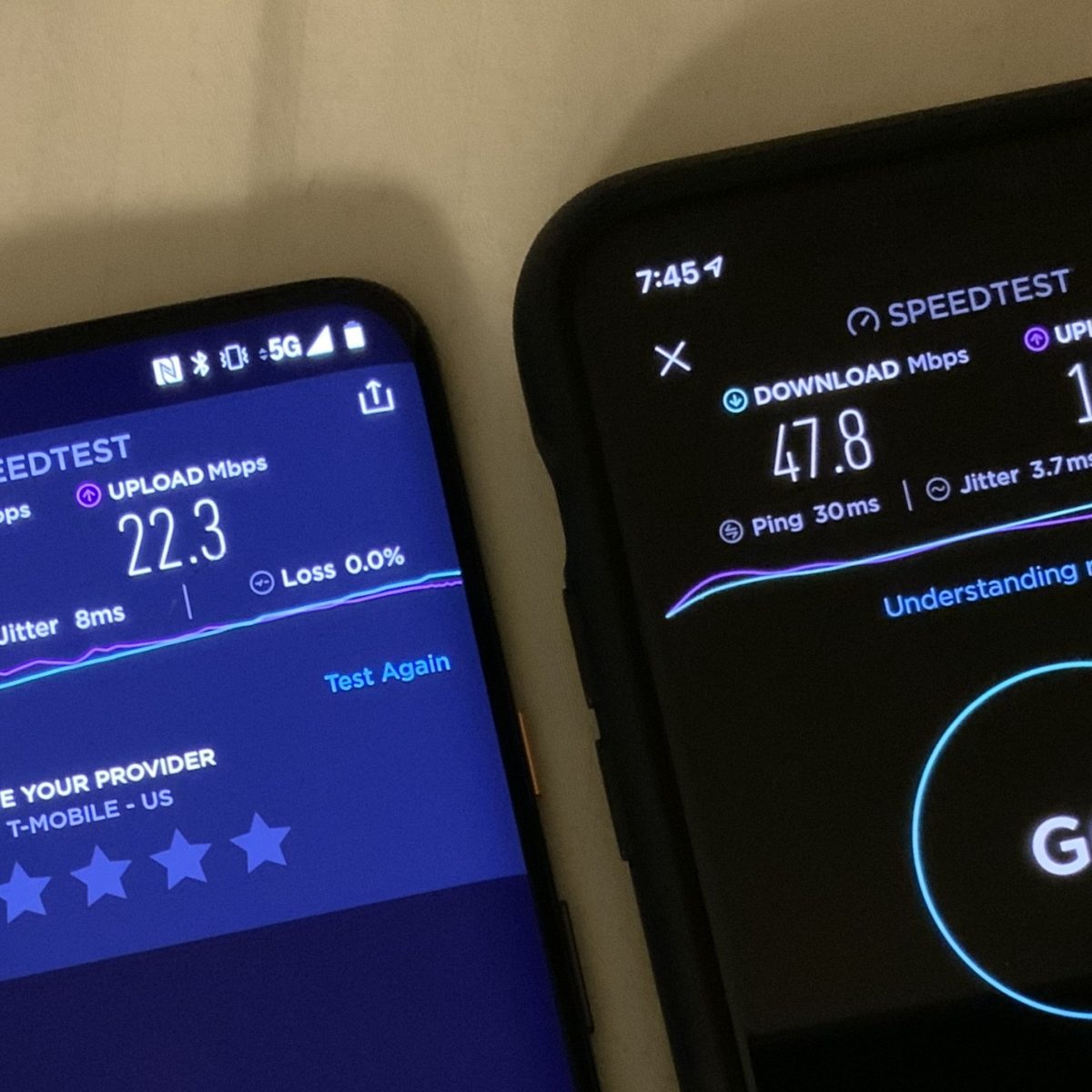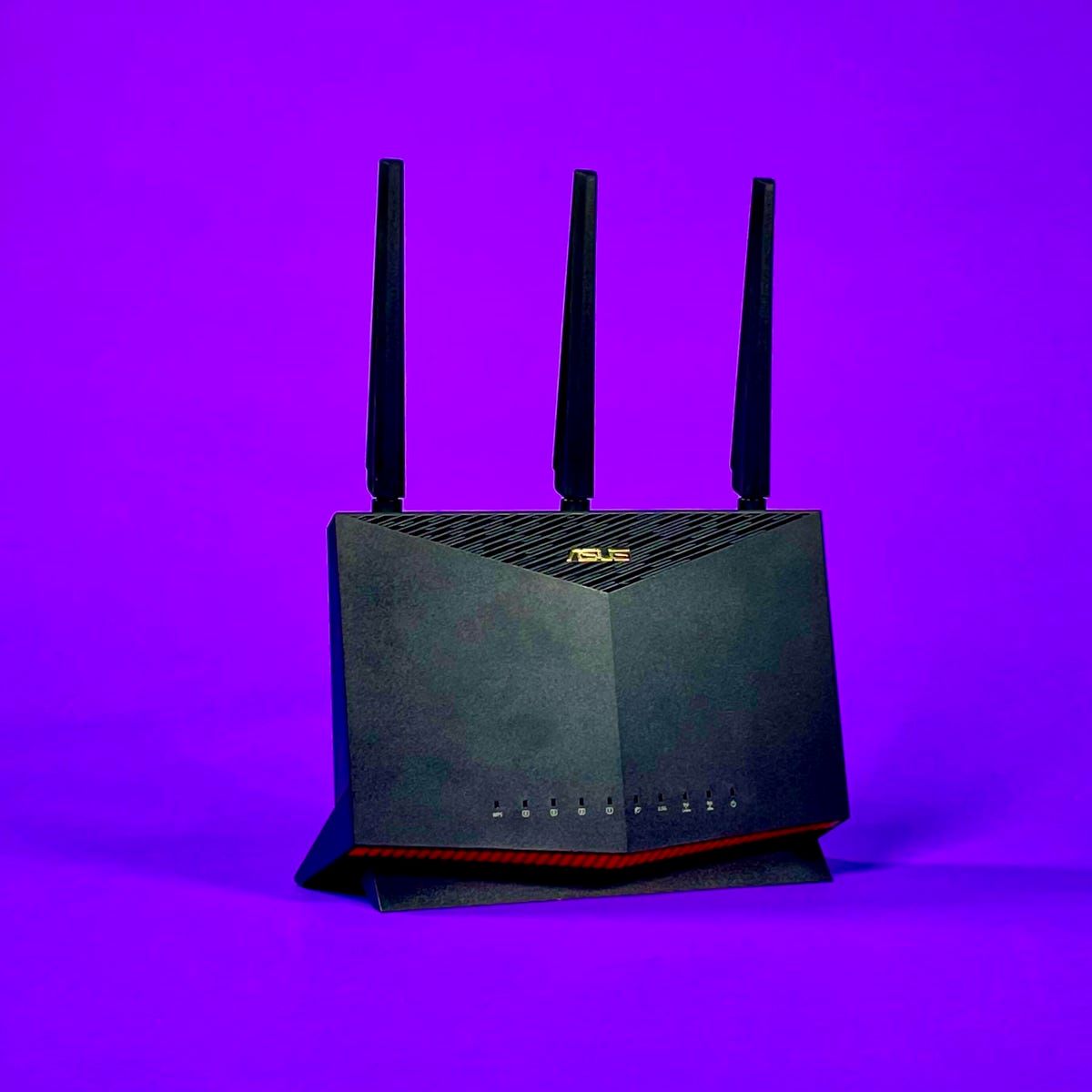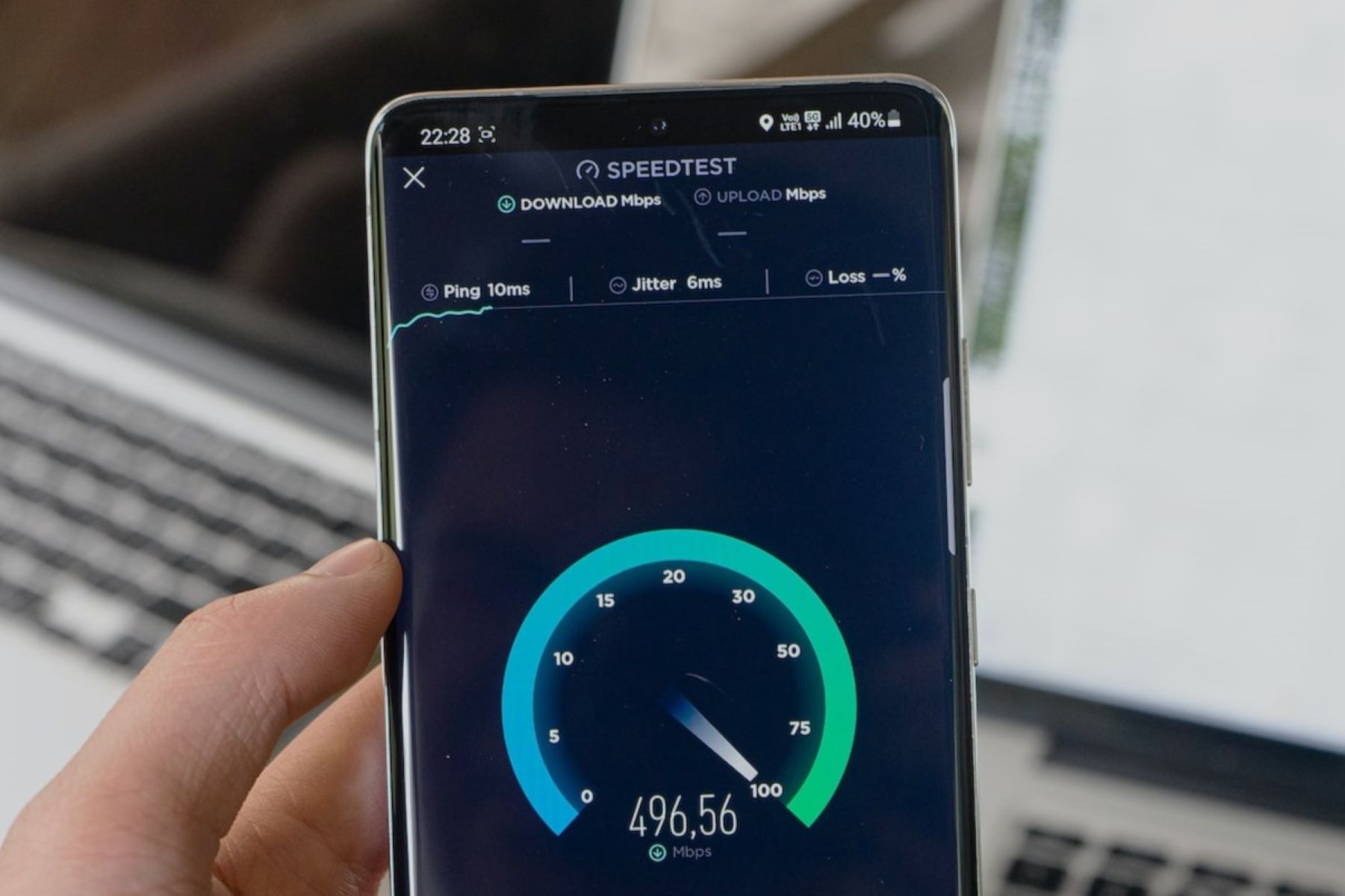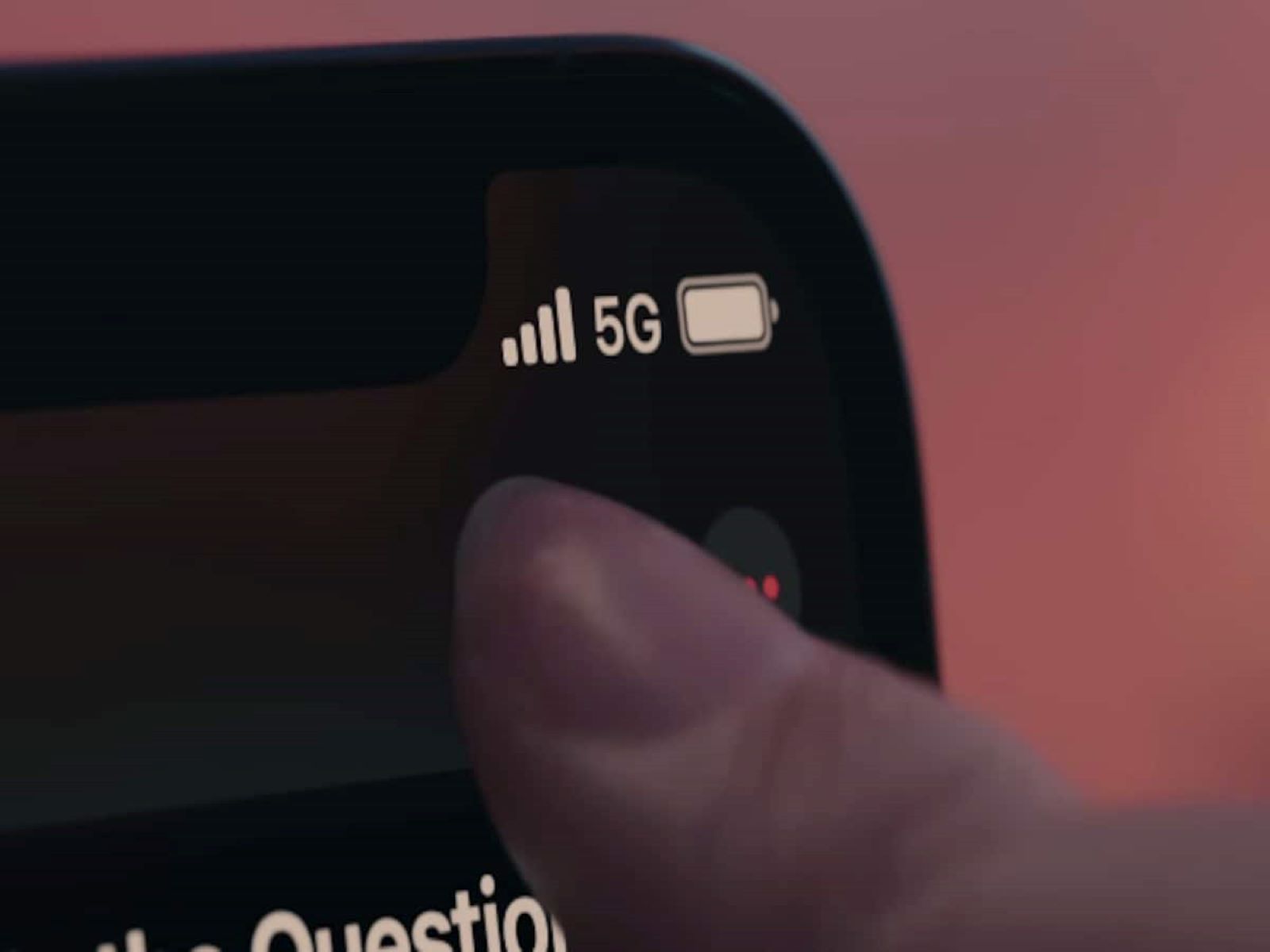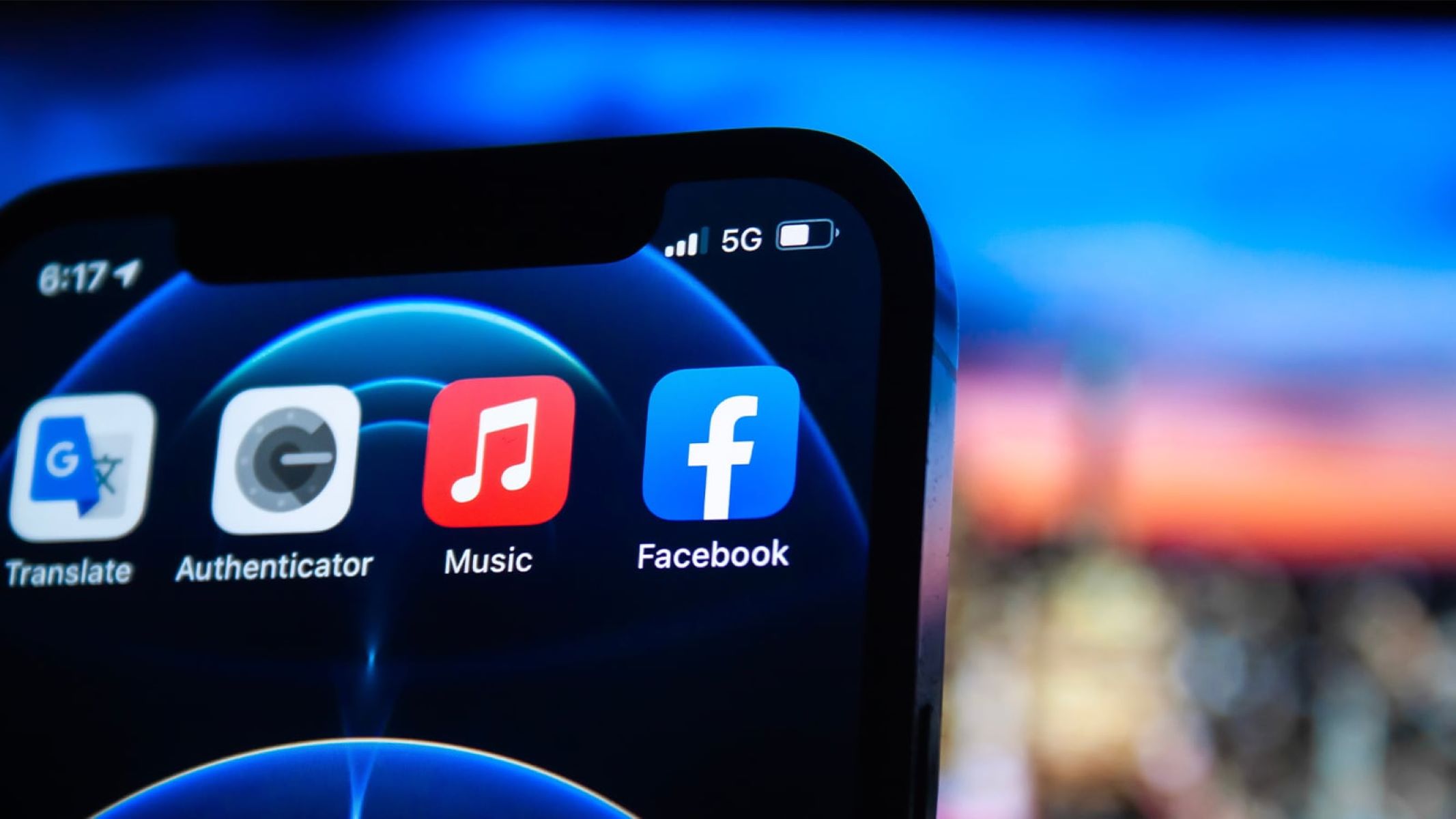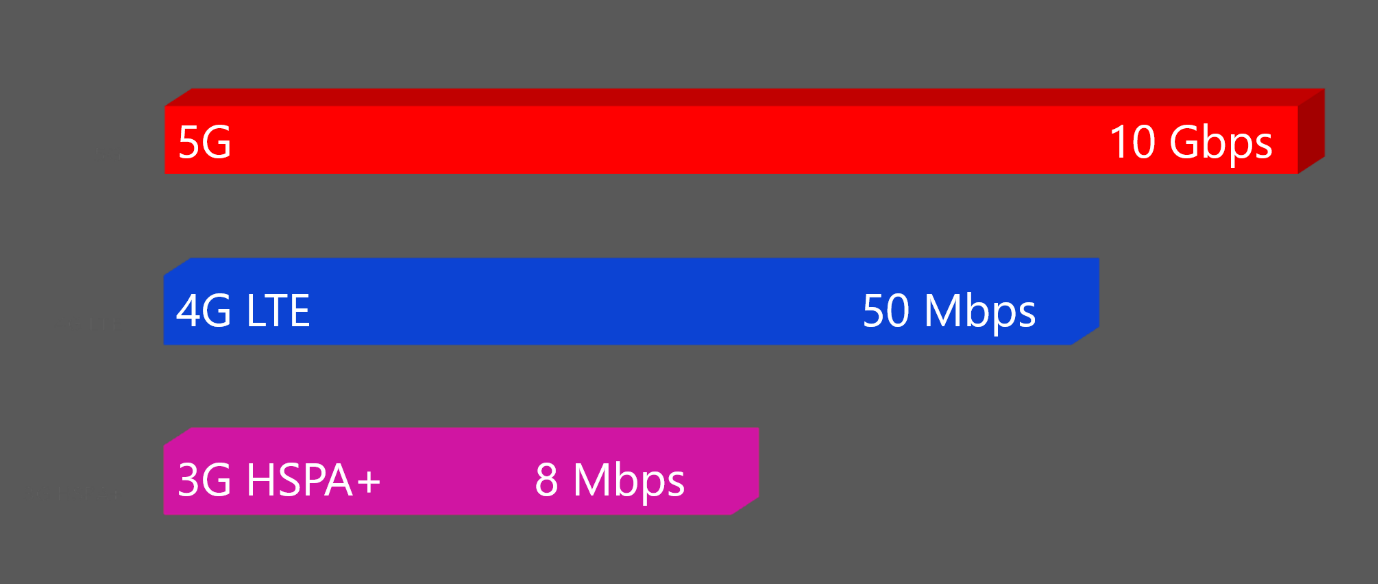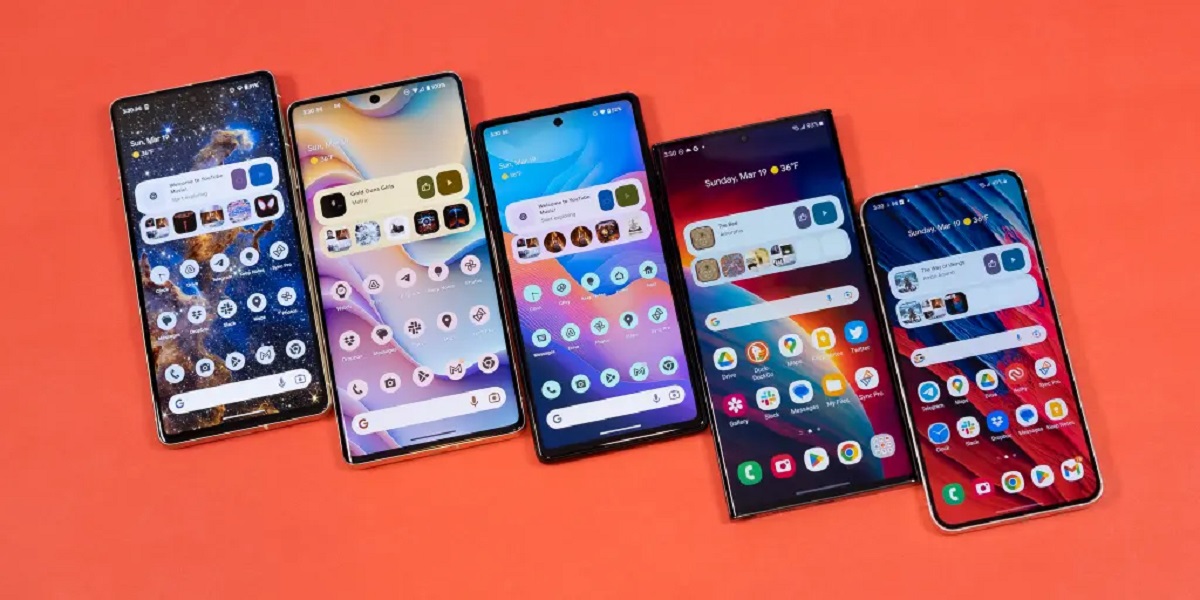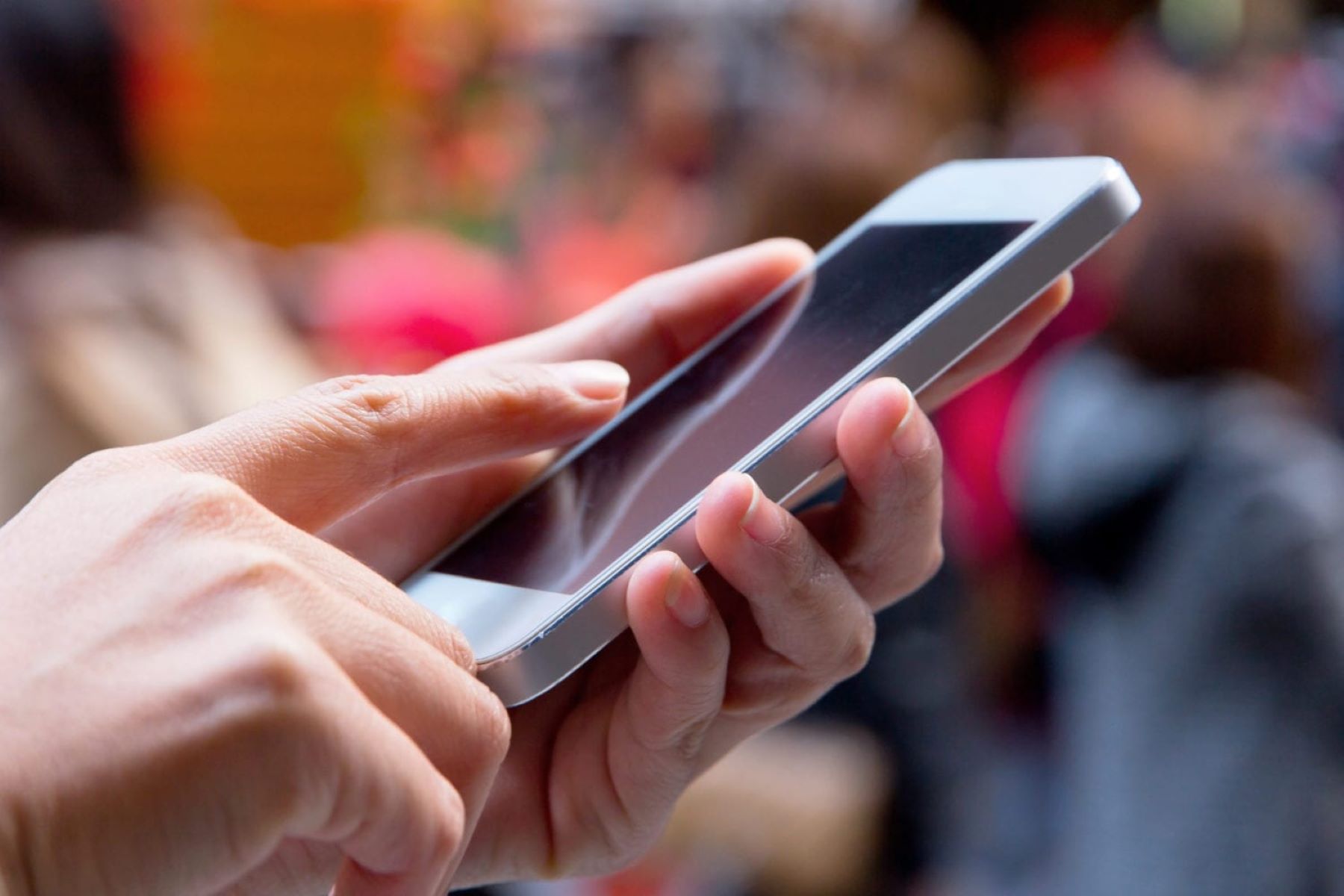Introduction
Welcome to the era of 5G! As technology continues to advance at an unprecedented pace, 5G has emerged as the next big thing in the world of telecommunications. With promises of lightning-fast download speeds, reduced latency, and seamless connectivity, 5G has captured the attention of smartphone users worldwide. However, despite the hype surrounding this new technology, you may find yourself wondering, “Why is my 5G phone so slow?”
Before we dive into the possible reasons behind your sluggish 5G speeds, let’s first understand what 5G is all about. Fifth-generation wireless technology, or 5G, is the latest iteration in mobile network standards. It promises to deliver significantly faster data speeds compared to its predecessor, 4G LTE. With theoretical download speeds of up to 10 gigabits per second, 5G has the potential to revolutionize how we consume data on our smartphones and other connected devices.
However, even with the advancements of 5G, there can be instances where you experience slower-than-expected speeds on your 5G-enabled device. While it can be frustrating, it’s important to keep in mind that several factors can contribute to this issue. In this article, we will explore some of the common reasons why your 5G phone may be performing slower than you anticipated.
What is 5G?
In order to understand why your 5G phone may be experiencing slower speeds, let’s first take a closer look at what 5G technology entails. Fifth-generation wireless technology, commonly referred to as 5G, represents the latest advancement in mobile network standards. It is designed to offer faster data speeds, lower latency, and better reliability compared to its predecessor, 4G LTE.
5G operates on higher frequency bands, known as millimeter waves (mmWave), which have a larger bandwidth and can transmit data at faster speeds. This allows for quicker downloads, seamless streaming, and improved overall performance on 5G-enabled devices.
One of the primary advantages of 5G is its ability to support a massive number of connected devices simultaneously. With the Internet of Things (IoT) rapidly expanding, 5G networks can handle the increasing demand for connected devices, from smartphones and tablets to smart home devices and even autonomous vehicles.
In addition to its speed and capacity improvements, 5G is expected to usher in new applications and capabilities, such as augmented reality (AR), virtual reality (VR), and advanced machine-to-machine communication. These technologies will revolutionize industries across the board, including healthcare, manufacturing, transportation, and entertainment.
However, it’s important to note that the implementation of 5G is an ongoing process. While major network providers have rolled out initial 5G coverage in certain areas, achieving widespread 5G availability will take time. Coverage areas may vary, and certain regions may have limited access to 5G networks.
Overall, 5G represents a significant leap forward in mobile network technology. Its faster speeds, lower latency, and enhanced capacity will transform how we connect and interact with the digital world. Understanding the capabilities and limitations of 5G is crucial in troubleshooting any issues you may encounter with your 5G-enabled device.
Factors affecting 5G speed
While 5G technology promises blazing-fast speeds, there are several factors that can impact the actual performance of your 5G connection. Understanding these factors can help you identify the reasons behind your slow 5G speed. Let’s take a look at some of the key factors that can affect your 5G connection:
Network congestion: Just like with any network, 5G can experience congestion when many users are connected to the same network tower. During peak usage times or in densely populated areas, the increased demand on the network can slow down your 5G speeds. This is similar to experiencing slow speeds on a congested highway.
Signal interference and strength: The strength and quality of your 5G signal can also impact the speed of your connection. Factors such as physical obstructions (like buildings or trees), distance from the nearest cell tower, and even the materials used in your surroundings can weaken your 5G signal. Poor signal strength can result in slower data speeds and even dropped connections.
Location and distance from the cell tower: The proximity of your device to the nearest 5G cell tower plays a crucial role in determining your connection speed. If you are far away from the tower, your signal may have to travel a longer distance, resulting in slower speeds. Additionally, if you are located in a remote area where 5G coverage is limited, you may experience slower speeds or even revert to a 4G or 3G connection.
Network provider limitations: Different network providers may have varying levels of 5G infrastructure and coverage. While one provider may offer extensive 5G coverage in a particular area, another provider may only have limited coverage. If your network provider does not have robust 5G infrastructure or if you are roaming on a different network, it can impact the speed of your 5G connection.
Device compatibility issues: Not all devices are created equal when it comes to 5G. Older devices that are not specifically designed to support 5G technology may experience compatibility issues or may not be able to take full advantage of the high-speed capabilities. Make sure that your device is 5G-enabled and meets the necessary requirements to ensure optimal performance.
Software and firmware problems: Like any electronic device, your 5G phone can encounter software or firmware glitches that can impact its overall performance. Regularly updating your device’s software, including the operating system and apps, can help resolve any potential issues and ensure optimal 5G speed.
Other potential causes of slow 5G speed: There can be other factors that contribute to your 5G connection being slower than expected. These include network provider throttling, outdated or faulty network equipment, or even interference from neighboring devices. Identifying and addressing these issues can help improve your 5G speed.
It’s essential to consider these factors when troubleshooting slow 5G speed. By understanding the potential causes, you can take the necessary steps to improve your connection and enjoy the full benefits of 5G technology.
Network congestion
Network congestion is a common factor that can significantly affect the speed of your 5G connection. Imagine a crowded highway during rush hour where traffic moves slower than usual. Similar to that scenario, network congestion occurs when there is a high volume of users connected to the same network tower, causing a slowdown in data transmission.
During peak usage times, such as evenings or weekends, or in densely populated areas like shopping centers or stadiums, the demand on the network can exceed its capacity. This increased demand puts strain on the network infrastructure, resulting in slower speeds for all users connected to that network tower.
Network congestion in a 5G network can occur due to several reasons. First, the number of users actively using the network in a specific area can be a contributing factor. If many people are connected to the same tower, the available bandwidth is divided among all the users, leading to slower speeds for each individual.
Secondly, network providers allocate resources to different generations of wireless technology, including 2G, 3G, 4G, and 5G. In areas where 5G coverage is still limited or in the early stages of deployment, the network resources may be shared between 4G and 5G users. This can lead to congestion when both 4G and 5G users are connected to the same tower and vying for limited resources.
Additionally, specific events or gatherings in a particular location can cause temporary network congestion. For example, during a music festival or sporting event, a large number of people gather in a concentrated area, putting a strain on the network infrastructure and causing slower speeds for everyone trying to access the network.
While network providers continually work to expand their infrastructure and increase network capacity to accommodate the growing demand, network congestion can still occur. It’s essential to be aware that network congestion is a temporary issue that usually alleviates once the peak usage period ends or when you move away from the congested area.
To mitigate the impact of network congestion on your 5G speed, you can try the following tips:
- Try using your 5G connection during less busy times, such as early morning or late at night, when the network is likely to have less congestion.
- Consider switching to a different network tower if multiple towers are available in your area. This can help you connect to a less congested tower and potentially improve your 5G speed.
- Disconnect and reconnect to the network. This can sometimes help you connect to a less crowded tower and improve your speeds.
- If possible, connect to a Wi-Fi network instead of relying solely on your 5G connection. Wi-Fi networks generally have more bandwidth and can provide faster speeds, especially in congested areas.
- Consider contacting your network provider to inquire about any ongoing network upgrades or improvements that may alleviate congestion in your area.
By understanding network congestion and implementing these strategies, you can potentially improve your 5G speed, especially during periods of high network demand.
Signal interference and strength
The strength and quality of your 5G signal play a significant role in determining the speed of your connection. Signal interference and weak signal strength can result in slower data speeds and even dropped connections. Understanding the factors that can interfere with your signal and degrade its strength is crucial in troubleshooting slow 5G speed.
Physical obstructions: Physical obstructions, such as buildings, trees, or even geographical features like hills or mountains, can weaken your 5G signal. These obstructions can block or reflect the signal, leading to signal loss or reduced signal strength. The density and materials of the obstructions can have varying levels of impact on signal degradation.
Distance from the cell tower: The proximity of your device to the nearest 5G cell tower is an essential factor in signal strength. The farther your device is from the tower, the weaker the signal it receives. As a result, the speed and performance of your 5G connection may be adversely affected. Moving closer to the cell tower can help improve signal strength and subsequently enhance your 5G speed.
Signal interference: Interference from other wireless devices operating in the same frequency range as 5G can disrupt and weaken the signal. Common sources of interference include Wi-Fi routers, Bluetooth devices, cordless phones, and even other 5G devices in close proximity. Minimizing the distance between your device and potential sources of interference can help mitigate signal degradation.
Building materials: The materials used in buildings can block or weaken your 5G signal. Certain building materials, such as concrete, metal, or energy-efficient glass, can impede signal transmission. If you are indoors, your 5G signal may be weaker compared to when you are outside, especially if you are far from a window or have thick walls.
Network coverage limitations: In some cases, your 5G speed may be slow due to limitations in network coverage. While major network providers strive to expand their 5G coverage, certain areas may not have full 5G deployment yet. If you are in an area with limited 5G coverage, your device may fall back to a 4G or 3G connection, resulting in slower data speeds.
To improve your 5G speed by addressing signal interference and strength issues, consider the following steps:
- Ensure that your device has a clear line of sight to the nearest cell tower by minimizing obstructions between them.
- Try repositioning your device to different locations within your surroundings to find a spot with better signal reception.
- Avoid placing your device near sources of interference, such as Wi-Fi routers or other electronic devices.
- If you are indoors and experiencing weak signal strength, move closer to a window or consider using a signal booster or Wi-Fi network for a more reliable connection.
- Consult with your network provider to inquire about network coverage in your area and any potential solutions to improve signal strength.
By addressing signal interference and optimizing signal strength, you can significantly enhance your 5G speed and overall connectivity experience.
Location and distance from the cell tower
The location of your 5G-enabled device and its distance from the nearest cell tower are crucial factors that can impact the speed of your 5G connection. The proximity to the cell tower directly affects the strength and quality of your signal, ultimately affecting your overall 5G speed.
Distance from the cell tower: The closer your device is to the nearest 5G cell tower, the stronger the signal it can receive. As a result, the speed and performance of your 5G connection are generally better when you are in close proximity to the tower. This is because the signal has to travel a shorter distance, resulting in reduced signal loss and better overall signal strength.
Geographical factors: Geographical features, such as hills, mountains, or even dense forests, can impact the distance your signal has to travel from the cell tower to your device. These natural obstacles can obstruct or weaken the 5G signal, leading to slower speeds and potential signal drops. If you are in an area with challenging terrain, your 5G coverage and speed may be affected.
Indoor vs. outdoor coverage: The location of your device, whether indoors or outdoors, can also affect your 5G speed. When you are indoors, the signal may have to pass through walls, floors, or other obstacles, which can result in signal loss or a weaker signal overall. Being closer to windows or moving outside can often lead to better signal reception and consequently improve your 5G speed.
Network coverage limitations: It’s important to note that 5G coverage may not be available in all areas. While major network providers continuously expand their 5G infrastructure, certain cities or regions may have limited 5G coverage or may not have 5G deployment at all. In such cases, your device may fall back to a 4G or 3G connection, resulting in slower data speeds.
To potentially improve your 5G speed by addressing location and distance factors, consider the following steps:
- If you are experiencing slow 5G speed, try moving closer to a window or to an outdoor area to establish a stronger connection with the cell tower.
- Be aware of the geographical features in your surroundings that may obstruct the 5G signal. Adjusting your location or moving to an area with fewer obstructions can help improve your 5G speed.
- If you are indoors and experiencing weak 5G signal strength, consider using a signal booster or Wi-Fi network for a more reliable connection.
- If you frequently experience slow 5G speeds in your area, contact your network provider to inquire about network coverage and any potential upcoming infrastructure improvements.
Being mindful of your location and distance from the cell tower can help optimize your 5G speed and overall connectivity experience. By understanding these factors and making necessary adjustments, you can enhance your 5G connection and take full advantage of the high-speed capabilities.
Network provider limitations
When it comes to 5G speed, network provider limitations can play a significant role in determining the performance of your 5G connection. Different network providers have varying levels of 5G infrastructure and coverage, which can impact the speed and reliability of your connection.
Network infrastructure: The extent and quality of a network provider’s 5G infrastructure directly affect the speed at which you can access 5G services. Providers that have invested in robust 5G infrastructure with a wide coverage area and a dense network of cell towers are more likely to offer faster and more consistent 5G speeds. On the other hand, providers with limited 5G infrastructure may have slower speeds or limited coverage areas.
Network capacity: Network capacity refers to the maximum amount of data that a network can handle at a given time. If a network provider’s 5G network is congested due to high demand or if the network’s capacity hasn’t been optimized, it can result in slower speeds for users. Providers with limited network capacity may struggle to deliver consistent high-speed 5G connections, particularly during peak usage times or in densely populated areas.
Roaming limitations: If you are traveling or in an area where your network provider doesn’t have 5G coverage, you may rely on roaming services from another provider. However, not all roaming agreements guarantee access to high-speed 5G connections. The speed and performance of roaming services may vary depending on the agreements between the network providers involved. It’s important to check with your network provider to understand the limitations and potential speed reductions when roaming on other networks.
Future upgrades: Network providers continue to invest in expanding their 5G networks and improving overall performance. Ongoing upgrades in infrastructure, such as the rollout of additional cell towers or upgrades to equipment, can enhance the speed and reliability of your 5G connection. Staying informed about your network provider’s plans for future upgrades can help you anticipate improvements in 5G speed.
Consultation with your network provider: If you experience persistent slow 5G speeds, it may be beneficial to reach out to your network provider for assistance. They can provide valuable insights into the current state of their 5G infrastructure and coverage in your area. They may also offer troubleshooting tips or potential solutions to improve your 5G speed. Exploring different plans or options, such as upgrading to a higher-tier plan with faster speeds, may also be worth considering.
Understanding the limitations of your network provider’s 5G infrastructure and coverage can help you manage your expectations regarding 5G speed. While providers strive to offer the best possible experience, it’s important to be aware of any limitations that may affect your 5G connection. By staying informed and exploring potential solutions, you can optimize your 5G speed and enjoy the benefits of this advanced wireless technology.
Device compatibility issues
Device compatibility is an important consideration when it comes to experiencing optimal 5G speeds. Not all devices are created equal when it comes to 5G technology, and compatibility issues can result in slower speeds or the inability to access 5G networks altogether.
Device support: To fully utilize the benefits of 5G technology, your device must be specifically designed to support 5G networks. Older devices that were released before the 5G era may not have the necessary hardware or capabilities to connect and access 5G speeds. Therefore, it’s essential to ensure that your device is 5G-enabled and meets the required specifications.
Carrier compatibility: In addition to device compatibility, it’s important to consider compatibility with your network carrier. Different carriers may operate on different 5G frequency bands, and not all devices may support the specific frequency bands used by a particular carrier. Ensuring that your device is compatible with your carrier’s 5G network is crucial to access the fastest speeds available.
Software updates: Keeping your device’s software up to date is essential to address any bugs or compatibility issues that may impact your 5G speed. Device manufacturers often release software updates to optimize performance and improve compatibility with 5G networks. Regularly checking for and installing these updates can help ensure that your device is running optimally and can take full advantage of the available 5G speeds.
Device settings: Certain device settings or features can affect your 5G speed. For example, if your device is set to connect to 5G and 4G networks simultaneously, it may prioritize a stronger 4G signal over a weaker 5G signal, resulting in slower speeds. Checking your device’s settings and adjusting them to prioritize 5G can help improve your connection speed.
Device age and condition: Over time, devices may experience hardware degradation or wear and tear, which can impact their overall performance, including 5G speed. If you are using an older device or a device in poor condition, it may not be able to achieve the same speeds as newer or well-maintained devices. Consider upgrading or servicing your device if you consistently experience slow 5G speeds.
In case you are experiencing slow 5G speeds despite having a compatible device, make sure to troubleshoot the issue. Restart your device, check for software updates, or reach out to your device manufacturer’s support to address any potential compatibility issues.
By ensuring device compatibility, keeping software up to date, and utilizing the appropriate settings, you can maximize your device’s potential and experience optimal 5G speeds.
Software and firmware problems
Software and firmware play a crucial role in the performance of your 5G-enabled device. Issues with software or firmware can lead to slow 5G speeds or other connectivity problems. It’s important to address these problems to ensure optimal 5G performance.
Operating system updates: Keeping your device’s operating system up to date is essential for addressing any software-related issues that may impact 5G speed. Device manufacturers regularly release updates that include bug fixes, performance enhancements, and optimizations for newer technologies like 5G. By installing the latest operating system updates, you can ensure that your device is running smoothly and taking full advantage of 5G capabilities.
Application updates: Updating your applications is equally important to maintain compatibility with the latest software and firmware of your device. Developers often release updates that address performance issues, introduce new features, and ensure compatibility with evolving technologies like 5G. Regularly updating your applications can help optimize their performance and enhance your overall 5G speed and experience.
Background processes and resource consumption: Background processes and resource-intensive applications can consume system resources and affect the performance of your device’s 5G connection. Ensure that unnecessary applications and processes are closed or restricted to minimize resource consumption. This can help free up system resources and allocate them to 5G-related tasks, improving overall performance and speed.
Factory resets and troubleshooting: If you are experiencing persistent issues with your device’s software or firmware, performing a factory reset may help. A factory reset restores your device to its original settings and can resolve software-related issues that may be impacting your 5G speed. Before performing a factory reset, make sure to backup your important data and files. Additionally, troubleshooting methods provided by your device manufacturer or network provider can help identify and resolve specific software or firmware-related problems.
Device-specific firmware updates: Device manufacturers sometimes release firmware updates that address specific issues or improve device performance. These updates may include optimizations for 5G connectivity and can help resolve any firmware-related problems that could be impacting your 5G speed. Checking for and installing device-specific firmware updates is important to ensure your device is operating at its best.
If you are experiencing slow 5G speeds or other connectivity issues, ensure that your device’s software and firmware are up to date. Regularly checking for updates, performing troubleshooting steps, and seeking support from your device manufacturer or network provider can help identify and resolve any software or firmware-related problems that may be affecting your 5G speed.
By keeping your device’s software and firmware updated and addressing any software-related issues, you can maximize your device’s performance and enjoy the full benefits of 5G technology.
Other Potential Causes of Slow 5G Speed
While network congestion, signal interference, device compatibility, and software/firmware issues are common factors that can contribute to slow 5G speeds, there are other potential causes that should be considered. These factors may not always be within your control, but understanding them can help identify the root cause of your slow 5G speed:
Peak usage times: During peak hours, such as evenings or weekends, more users are likely to be on the network, which can lead to increased congestion and slower speeds. The increased demand on the network’s resources can impact the performance of your 5G connection. Consider using your 5G connection during off-peak hours to potentially experience faster speeds.
Network provider throttling: Some network providers practice data throttling, which involves deliberately slowing down the internet speed for specific activities or when a user crosses a certain data usage threshold. This is often done to manage network congestion or ensure fair usage across all users. If you consistently experience slow speeds even when you have a strong 5G signal, it is worth checking if your network provider applies any throttling policies.
Device hardware limitations: While device compatibility is important, certain hardware limitations can also impact 5G speeds. Older devices or devices with lower-end hardware specifications may not be able to handle the high-speed capabilities of 5G networks, resulting in slower speeds. Upgrading to a newer, more powerful device may help improve your 5G speed.
Environmental factors: Environmental conditions, such as weather conditions or electromagnetic interference, can impact signal propagation and result in slower 5G speeds. For example, heavy rain, dense fog, or strong electromagnetic interference in your immediate surroundings can weaken the 5G signal, leading to slower speeds. While these factors are often temporary, they can affect your speed in the short term.
Network maintenance or upgrades: Network providers occasionally perform maintenance or upgrades on their infrastructure to improve performance and capacity. During these periods, you may experience temporary slowdowns or interruptions in your 5G speed. Checking for any scheduled maintenance or upgrades from your network provider can provide insights into potential speed disruptions.
Service plan limitations: Your service plan may have speed limitations or data caps in place. If you have exceeded your data allowance or are on a plan with limited 5G speeds, your connection may be intentionally slowed down. Reviewing your service plan and its associated limitations can help identify if this is the cause of your slow 5G speed.
By considering these additional factors and ruling out any potential issues, you can gain a better understanding of why you may be experiencing slow 5G speeds. If your speed issues persist despite troubleshooting, contacting your network provider for further assistance can help resolve any underlying problems.
Remember, 5G technology is still evolving, and occasional speed variations can occur due to a range of factors. By staying informed, optimizing compatibility, and addressing any potential causes, you can make the most of your 5G connection and enjoy its high-speed capabilities.
Conclusion
In conclusion, there can be several reasons why your 5G phone may be experiencing slower speeds than expected. Factors such as network congestion, signal interference and strength, distance from the cell tower, network provider limitations, device compatibility issues, software and firmware problems, and other potential causes can all contribute to slower 5G speeds.
Understanding these factors is essential in troubleshooting and improving your 5G speed. By identifying the specific cause or causes that apply to your situation, you can take appropriate steps to address them and enhance your 5G performance.
Some tips and solutions you can try include avoiding peak usage times, repositioning your device to improve signal strength, checking for network provider throttling policies, ensuring device compatibility with 5G networks, keeping your device’s software and firmware up to date, and considering factors like weather conditions or electromagnetic interference that may impact signal quality.
Additionally, consulting with your network provider, performing troubleshooting steps, and exploring potential network upgrades or device replacements can help resolve persistent speed issues.
It’s important to remember that 5G technology is still evolving, and occasional speed variations may be experienced due to a range of factors. However, by staying informed, optimizing compatibility, and addressing any potential causes, you can maximize your 5G connection and enjoy the benefits of fast, reliable internet speeds.
With the potential for lightning-fast download speeds, reduced latency, and seamless connectivity, 5G is set to transform the digital landscape. By troubleshooting and addressing any speed issues, you can truly harness the power of 5G for all your online activities, whether it’s streaming high-definition content, playing online games, or utilizing bandwidth-intensive applications.
Embrace the potential of 5G, understand the factors that can impact its speed, and take the necessary steps to optimize your connection. Unlock the full potential of this cutting-edge technology and experience the future of mobile connectivity.







